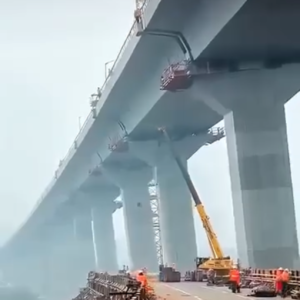A Life-Altering Incident: Heavy Object Falling on Head Caused Fatal Cervical Spine Fracture in 18-Year-Old Worker
In September 2022, the Journal of Orthopaedic Case Reports published a troubling case involving an 18‑year‑old male worker in India who sustained a severe cervical spine injury after a heavy metallic object fell directly on the front of his head while he was at work. This rare and catastrophic injury led to a retropulsion fracture of the C5 vertebral body, associated with a C6 fracture, and despite emergency care, the victim died two days later. This is the first recorded case of such injury morphology that defies standard classification systems.
The Incident: Sudden Trauma, Immediate Crisis
According to the case report, the young man was standing in his workplace when a large, heavy metallic pipe or beam unexpectedly fell from above and struck the frontal region of his head. He lost consciousness, fell into respiratory distress, and went into shock almost immediately upon impact. Emergency medical responders performed rapid intubation and stabilization, applying a rigid cervical collar before transferring him to hospital.
Medical Findings: A Rare and Dangerous Fracture
Once in the emergency department, the patient underwent non‑contrast computed tomography (NCCT) of the cervical spine. The images revealed:
An isolated retropulsion of the C5 vertebral body into the spinal canal.
Notably, no displacement of facet joints or pedicle fractures was seen.
A concurrent fracture in the postero‑superior portion of the C6 vertebral body was also identified.
Such an axial flexion‑compression injury, where the vertebral body is compressed and displaced backward (akin to a “nutcracker” effect), is exceptionally rare and has not been categorized within common classification systems such as Allen & Ferguson, SLICS, or AO Spine ([turn0search3], [turn0search0]). This was the first documented instance of this specific fracture pattern in medical literature.
Clinical Evolution: Stabilization Efforts and Fatal Outcome
Upon arrival, the patient was unstable, suffering from both hemodynamic compromise and respiratory insufficiency. He was intubated and placed on ventilatory support, and cervical traction was applied to reduce pressure on the spinal cord. Despite these interventions, his condition failed to improve and he died two days after the injury. The exceptionally severe injury and early presentation limited surgical options.
(CT/MRI).
Avoid unnecessary movement that may worsen spinal cord damage.
Clinical Awareness & Diagnostics
Medical teams should consider that flexion-compression injuries may not manifest as classic patterns; absence of facet displacement doesn’t rule out canal compromise.
Comprehensive imaging (NCCT and MRI where available) is critical for identifying uncommon fracture morphology.
Radiologists and spine surgeons should be aware of such rare presentations to inform surgical decision-making and avoid misclassification.



